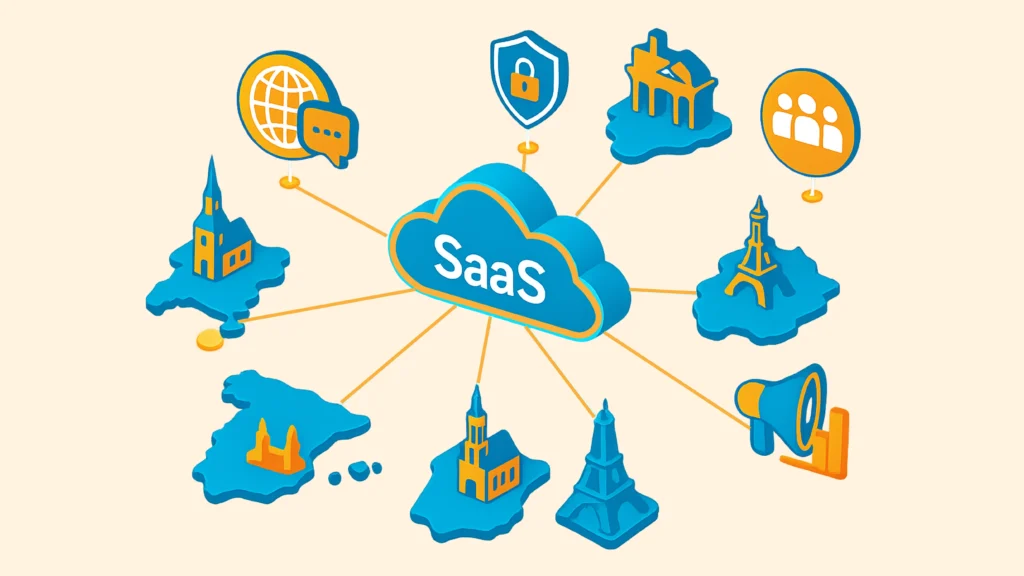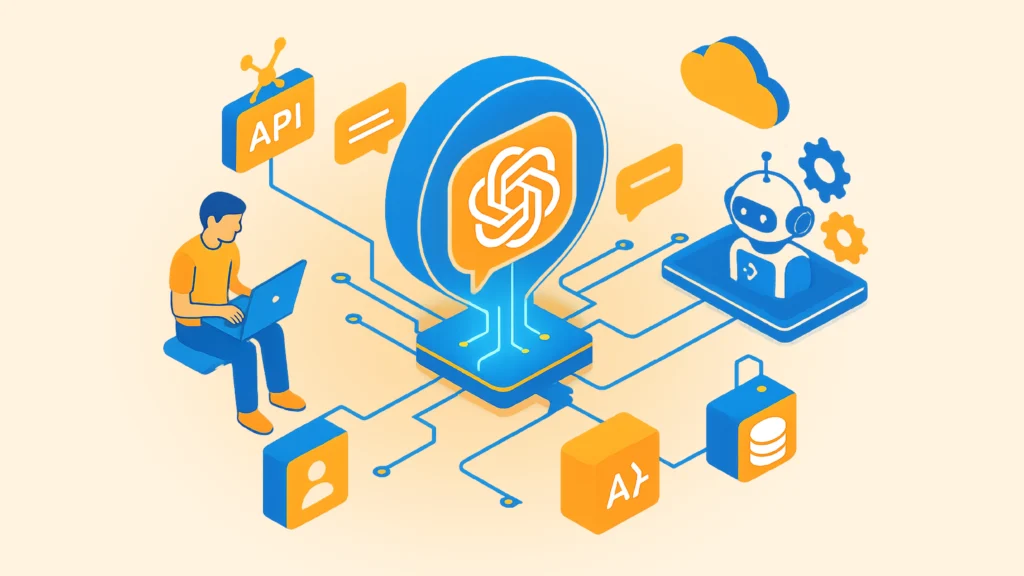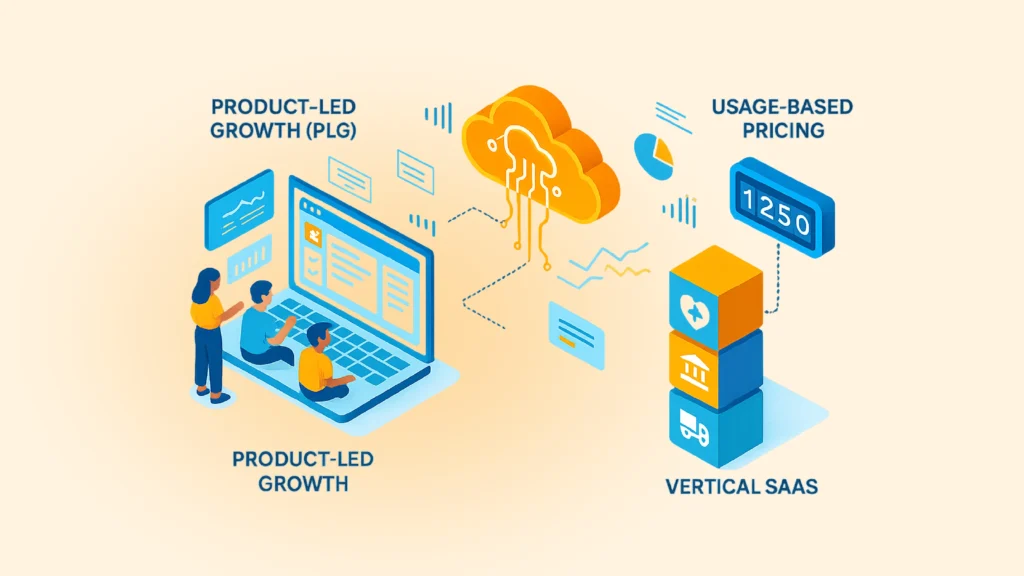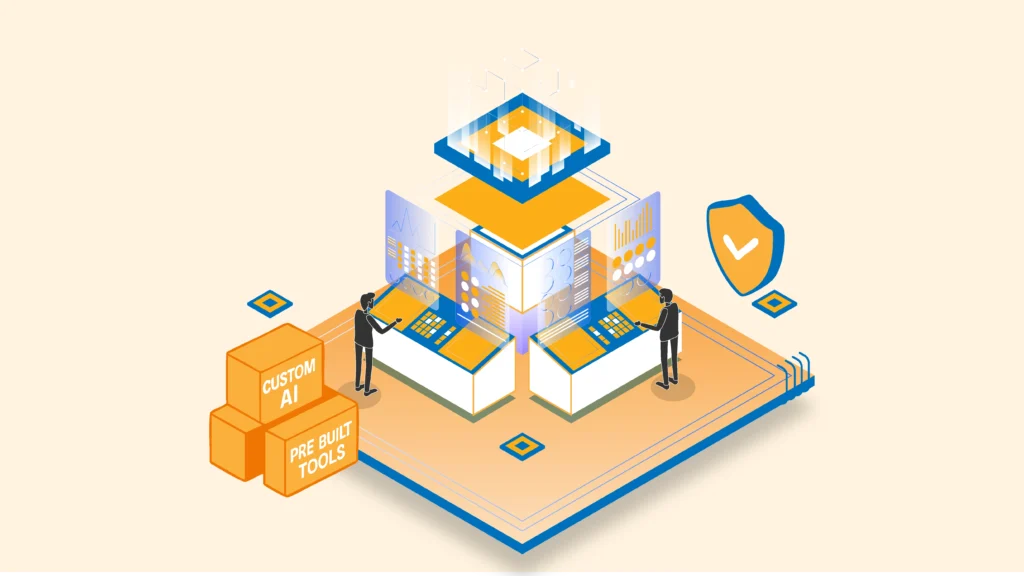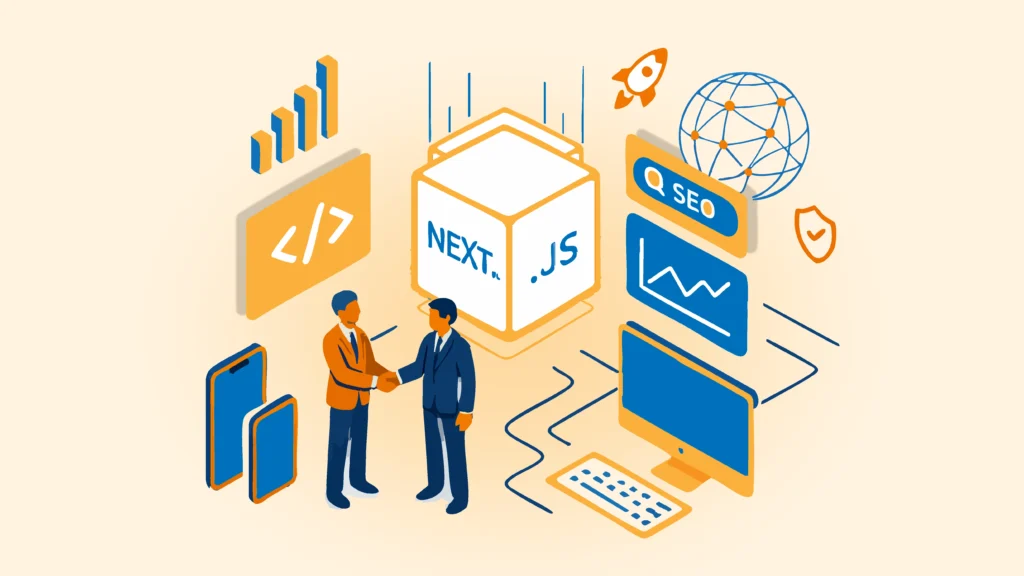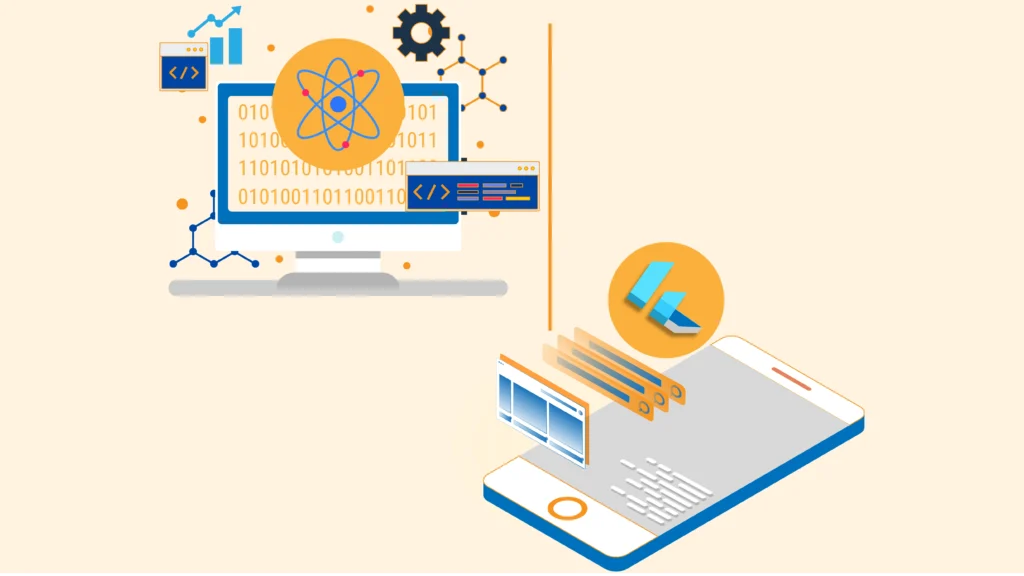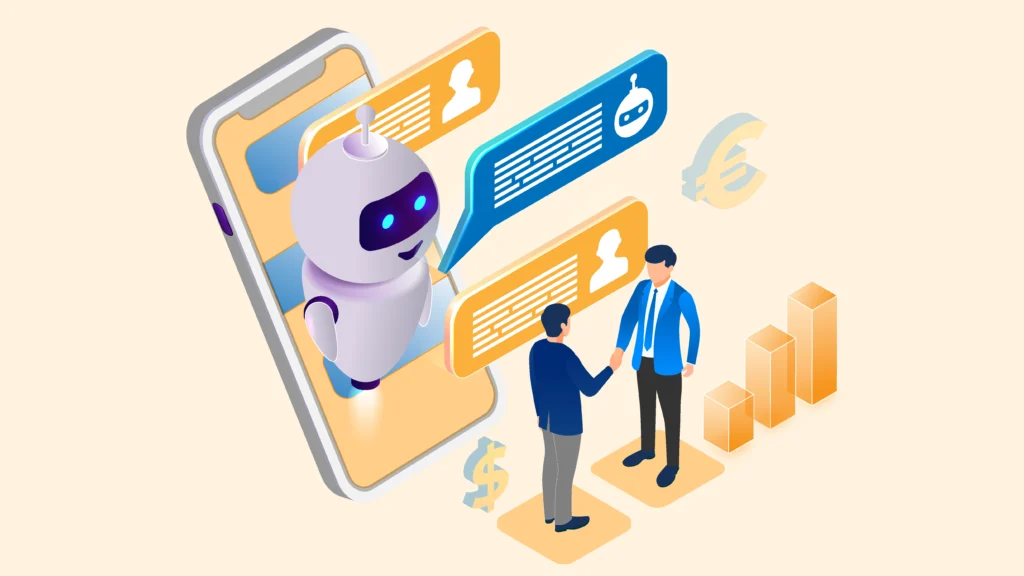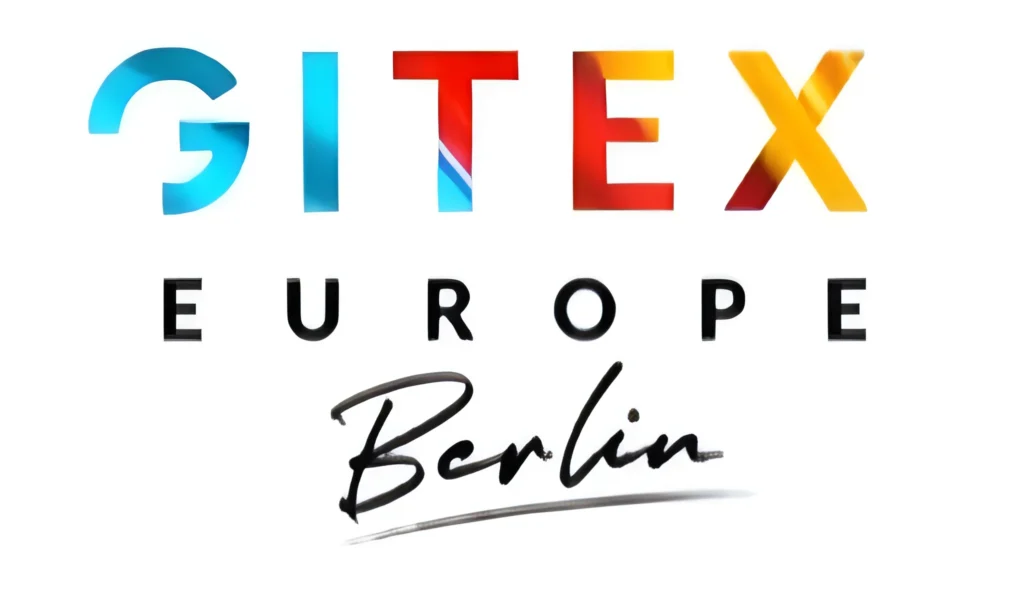Integrating ChatGPT & Langchain in Real-Time User Support with iQud
Integrating ChatGPT & Langchain in Real-Time User Support with iQud
- September 29, 2025
- 13 Mins Read
Introduction
In today’s fast-paced digital world, integrating ChatGPT and LangChain enables real-time, intelligent user support. At iQud, we harness these advanced AI frameworks to deliver seamless interactions, automate responses, and enhance user satisfaction—empowering businesses with smarter, scalable, and context-aware customer service solutions.
Why AI is Revolutionizing Real-Time User Support
The customers of the modern digital-first world are no longer ready to endure extended waiting lines or monotonous dialogues with the support services. They demand quick, correct, and customized service at a glance- and this is where Artificial Intelligence (AI) is changing the frontier of real-time user services.
- Speed: AI-based assistants respond in real-time, whilst human agents have to work within a queue.
- Cost Effectiveness: Companies save the expense of having massive support departments whilst maintaining massive volumes of queries.
- Personalization: AI does not forget user preferences or past issues like a static FAQ does, but can respond to these based on them.
- 24/7 Availability: The users in various time zones are provided with round-the-clock assistance.
What is LangChain?
LangChain is an open-source framework constructed to augment the functionality of Large Language Models (LLMs), including ChatGPT, by linking them to sources of real-world data and tools, as well as to memory systems. LangChain fills this gap and makes AI more practical and flexible, and enterprise-ready.
Core Capabilities of LangChain
- Memory: LangChain does not forget the previous interactions as regular chatbots do. As an example, when a user states, Check my last order and then says, When will it arrive, LangChain recalls the reference. This renders discussions natural and flowing.
- Integrations: LangChain is compatible with external systems, such as APIs, CRM ( Salesforce, HubSpot ), databases, and knowledge bases. This ensures that AI does not only respond using pre-trained data, but also retrieves live and relevant data.
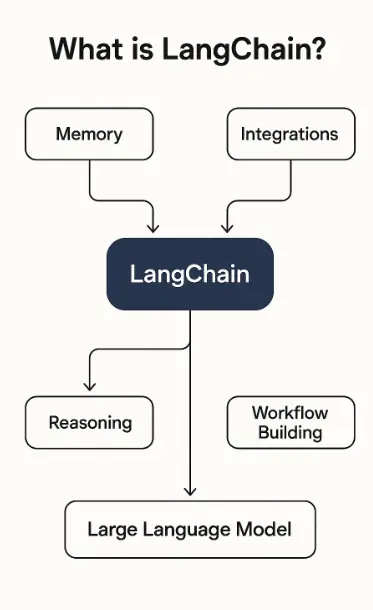
- Reasoning: It organizes the solution of problems in such a way that AI can think in stages. As an example, rather than provide a vague answer to a query on a refund, it can verify the status of the transaction, confirm eligibility, and give an informative response.
- Workflow Construction: LangChain allows the automation of multi-step processes. The processes, such as scheduling a meeting, identity verification, or even creating reports, can be automatically carried out with the help of predefined workflows.
Why LangChain Matters
Role of ChatGPT in User Support
- Instant Answers to FAQs
One of the greatest advantages of the tool is that ChatGPT can be scaled to frequently asked questions (FAQs). ChatGPT can answer questions in seconds and give correct and conversational replies to them, rather than forcing the customer to wait in line or scroll through lengthy faq pages to get an answer. It not only enhances the response time but also the user experience and trust. - Personalized Onboarding & Troubleshooting
ChatGPT is not a generic response and offers a personalized onboarding process and troubleshooting prompts. To provide an example, a new user of a SaaS system may be offered interactive product tours, but an existing user may be offered context-sensitive solutions to technical issues. This degree of personalization renders customer service more user-friendly and friendly. - Smart Escalation to Human Agents
Even though ChatGPT can respond to the majority of questions, it is also necessary to identify the occurrence of complex or sensitive scenarios, require human intervention. Intelligent escalation assists in ensuring that the customers are properly escalated to a human support agent without the need to repeat their entire inquiry, which saves them time and effort. - Turning Customers into satisfied people through human-like conversations.
ChatGPT will never lose human touch, and the strength of this tool is the ability to be genuinely empathetic. It could be a billing question, the support of product characteristics, or service after-sales, but in any case, ChatGPT will make sure that all the talks will be personal, polite, and professional.
Why Integrate ChatGPT with LangChain?
Limitations of ChatGPT Alone
- Lacks Contextual Memory: Cannot retain long-term user interactions for personalized support.
- No Direct Data Access: Cannot fetch or update real-time information like order status or inventory.
- Limited Integration: Works in isolation without connecting to external tools or databases.
- Risk of Generic Responses: May provide broad or inaccurate answers without specific inputs.
- Scalability Challenges: Struggles to handle complex workflows without additional frameworks like LangChain.
- No Workflow Execution: ChatGPT can give instructions on how to change a ticket or schedule an appointment, but not the action itself.
Benefits of ChatGPT + LangChain Integration
- Real-Time Data Fetching
Scenario: A customer would enquire, “What is the current location of my order? ChatGPT can be linked to your CRM, ERP, or database with LangChain, retrieving real-time order tracking information. - Memory & Context Retention
Example: A user chats today about a billing issue and returns next week. ChatGPT (through LangChain) remembers the last discussion, which is continuity and a personalized experience. - Automated Workflow Execution
Sample: A client will say, Please, can you reschedule my appointment for tomorrow at 3 PM. The ChatGPT + LangChain combination automatically updates the calendar instead of responding to it. - End-to-End Customer Support Engine
They do so jointly, going beyond FAQs, which means providing real-time interaction, customization, and automation of tasks. It therefore helps reduce the long wait time of the customer, along with an increased customer satisfaction ratio. With this outcome, the impact is also seen in operational and managerial costs.
ChatGPT + LangChain, in short, bridges the divide between conversation and action, and it makes customer support really intelligent and business-ready.
Key Benefits of Integration
- Context-Aware Responses
LangChain retains a record of previous conversations, allowing ChatGPT not to begin anew every time. Example: When a user enters the query, What is the status of my laptop order? Then the user says, When will it arrive, The system understands that she/he is talking about the same order. - Faster Resolution Times
AI retrieves real-time data rather than redirecting visitors to a human operator to answer simple questions. A mere Where’s my refund? It can be sorted out in a few seconds. - Seamless Automation
Routine assignments such as the resetting of passwords, the creation of invoices, or the booking of appointments may be automated. - Scalability
In contrast to the human teams, a single AI system can process thousands of users simultaneously, at no extra expense. - Multichannel Support
Deploy the same AI assistant in the web chat, email, mobile applications, WhatsApp, Slack, social media, etc, which guarantees a similar user experience.
ChatGPT + LangChain Workflow: How Integration Works.
- User Query → User poses a question (through chat, email, or app).
- LangChain Orchestration → Routes query to the appropriate tool (knowledge base, API, CRM).
- ChatGPT Processing → Produces a conversational, understandable response.
- Memory Layer → Stores context for future interactions.
- Response Delivery → Sends back a natural reply instantly.
It is a pipeline that supports intelligent, continuous, and real-time.
Tech Stack
- ChatGPT
- LangChain
- Python
- FastAPI
- PostgreSQL
- Twilio
- Slack API
- E-commerce: Monitor deliveries, offer refunds, and recommend products based on a basis of browsing.
- Healthcare: Make bookings of appointments, answer medical questions, and give medicine reminders (compliance).
- Banking & Fintech: Clear up questions regarding transactions, monitor account balance, and raise a red flag.
- SaaS Platforms: Onboarding, product features, and troubleshooting.
- Travel & Hospitality: Help with flight rescheduling, hotel check-ins, and itinerary planning.
Step-by-Step Guide to Implementing Integration
- Define Goals: Evaluate and understand what you demand from AI, and how it needs to be done.
- Select Infrastructure: Infrastructure such as AWS, Azure, or GCP is scalable.
- Set Up LangChain: Install and connect with APIs, CRMs, or databases.
- Integrate ChatGPT: ChatGPT with LangChain: Enable smarter, more natural conversations by connecting ChatGPT to other tools through LangChain’s API.
- Fine-Tune Content: Add company-specific FAQs, support scripts, and documents.
- Test: Run pilots with real customers, track performance.
- Deploy: Roll out across multiple support channels.
- Monitor and Optimize: Implement AI to keep a check on data and its reports, delivering real-time analytics.
Challenges & Best Practices
- Data Privacy & Security: Ensuring sensitive user data is encrypted, monitored, and protected from breaches while complying with regulations like GDPR and CCPA.
- Response Accuracy & Relevance: Preventing the AI from generating misleading, irrelevant, or harmful responses by continuously refining models and training data.
- User Adoption & Trust: Overcoming hesitation from users accustomed to human support by building transparent, reliable, and context-aware AI interactions.
- To ensure data security, it should be end-to-end encrypted.
- For high-end cases, it requires a human-in-the-loop.
- Time and again, train the model to maintain fresh content and prepare answers to respond to them.
- Track metrics (response time, accuracy, satisfaction).
Proactive Conversations: Redefining Real-Time Support with AI
- Voice-First Support Voice-based AI support is the next frontier of customer interaction. Rather than entering queries into chat windows, customers can use natural and human-like conversations on phones with the AI agents. These systems will be able to deal with complex requests, which will decrease the work of the call center agents, yet they will remain empathetic and accurate thanks to speech recognition and conversational AI.
- Predictive AI: Future support systems will prove to be proactive and not reactive. Through predictive analytics, AI will be able to detect possible issues even before the user raises a ticket. An example would be that an airline can be proactive to keep its customers informed of flight delays before they become frustrated and recommend other bookings to increase loyalty.
- IoT Integration: With the growth of the Internet of Things, AI-based support will be able to communicate with intelligent devices. Think of your washing machine with the ability to diagnose a problem and speak to the support using AI. The AI assistant will automatically be aware of the error codes and offer and issue instant troubleshooting or schedule a technician instead of explaining the issue.
- Hyper-Personalization: AI will become a personal concierge that will use comprehensive information about the customer’s history, preferences, and behavior. Users will get highly personal help that feels like a personalized reaction to their specific needs, rather than a generic answer like suggesting upgrades or offering quicker solutions, or recalling past frustrations.
- The Shift Ahead: The future of AI-based support is no longer reactive in solving problems, but rather in being proactive. At the heart of ChatGPT and LangChain, businesses will provide more personalized, more intelligent, and faster customer experiences, new standards in customer satisfaction and loyalty.

